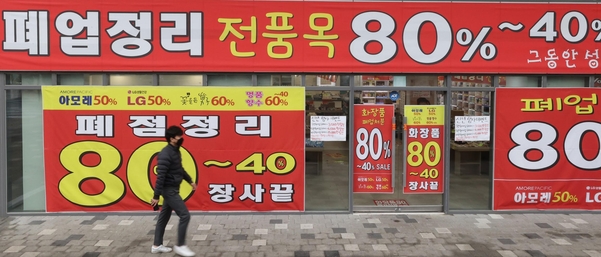Input 2021.01.26 12:03
BOK is “higher than GDP”, but concerns about self-employed and domestic demand worsening
Last year, real gross domestic income (GDI), which reflects the real purchasing power of economic actors, has stepped back for the first time in history for two consecutive years. If the terms of foreign trade deteriorated in 2019, the situation was a little different in 2020. After the novel coronavirus infection (Corona 19), exports recovered at a rapid pace, and import prices fell due to falling international oil prices.
Nevertheless, it was negative because the domestic demand was so severe. In the aftermath of Corona 19, private consumption has drastically decreased, and even income indicators have been sluggish. The Bank of Korea gave meaning to the fact that GDI is higher than the growth rate of GDP (-1.0%), the lowest level since the financial crisis, but there are many opinions that it cannot be evaluated positively.

The BOK gave meaning to last year that GDI was higher than GDP (-1.0%). This is because the trade conditions improved as the prices of imported goods such as crude oil fell in the aftermath of Corona 19. Moreover, exports began to recover in earnest from the fourth quarter due to the increase in global trade. It means that the situation is different from when GDI fell below GDP (2.0%) due to a fall in semiconductor unit prices in 2019.
“Last year, Korea’s GDP itself recorded -1.0%, so it was difficult for GDI to be positive just because purchasing power was considered,” said Park Yang-soo, head of the BOK Economic Statistics Bureau. “GDI was higher than GDP,” he explained.
However, experts note that the GDI was negative despite the fact that the containment measures were weak compared to other countries and that exports are recovering rapidly. The decline in private consumption due to the aftermath of Corona 19 was so severe that it could not be offset by exports, investment, and government consumption. The contribution of private consumption to the GDP growth rate is -2.4% (p). It is greater than the sum of contributions to net exports (0.4%p), facility investment (0.6%p), and government consumption (0.8%p).
It is a diagnosis that the proportion of self-employed people who were hit directly by Corona 19 was an excessive structural cause. According to the Organization for Economic Cooperation and Development (OECD), as of 2018, the proportion of self-employed in Korea was 25.1%, which is nearly twice the average of 13.7% in the G7 countries. On the other hand, the US is 6.3%, Canada is 8.3%, Germany is 9.9%, Japan is 10.3%, France is 11.7%, UK is 15.1, Italy is 22.9%, all lower than Korea.
This had an impact on deteriorating household income bases last year. According to the results of the 2020 Household Financial Welfare Survey, the average household income last year was 59.24 million won, an increase of only 1.7% from a year ago. It is the lowest growth rate since statistics were prepared in 2012. The public transfer income (4,570,000 won) supported by the government’s financial investment increased by 18.3%, a record high, but it did not offset the aftermath of a 2.2% decrease in business income (1,151 million won) of self-employed people. Earned income increased by 0.3% to 3791 million won.
Professor Seong Tae-yoon of the Yonsei University Department of Economics said, “The reason that the GDI growth rate last year was higher than GDP was possible because the exports were good.”
☞Gross Domestic Product (GDP): As a representative aggregate indicator that best represents a country’s economic performance, GDP refers to the market value of products. It includes both the volume factor and the price factor, and is measured by dividing into nominal GDP including the price factor and real GDP without the price factor to measure actual economic activity.
☞ Real Gross Domestic Income (GDI): This is an index that indicates the real purchasing power of the final product produced in Korea, calculated by adding real trade gains and losses according to changes in trade conditions to real GDP.
